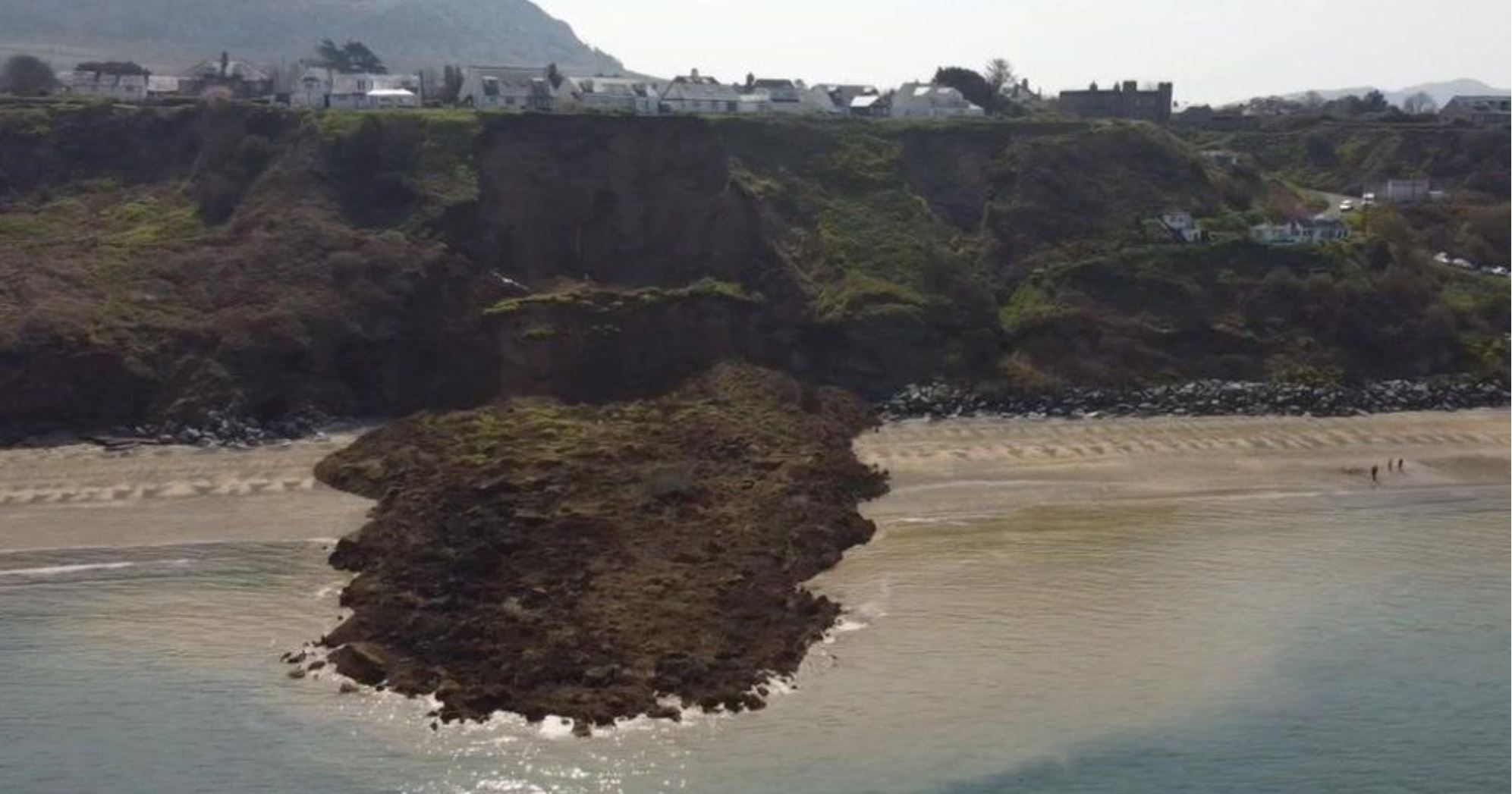20 April 2021
The 19 April 2021 coastal landslide at Nefyn Bay in North Wales
Posted by Dave Petley
The 19 April 2021 coastal landslide at Nefyn Bay in North Wales
On 19 April 2021 a really interesting coastal landslide occurred at Nefyn Bay in North Wales. The BBC has some good imagery of the aftermath:-

The 19 April 2021 coastal landslide at Nefyn Bay in North Wales. Image by Christian Pilling via BBC News.
.
This landslide is interesting for its timing – the UK is having a spell of unusually dry weather for April – and for its runout, which is quite long.
This landslide has received some attention in the UK, but strangely the most interesting element has not really received much publicity. This is that the landslide was captured on video by a woman, Amanda Stubbs, who was standing at the toe. It is brilliant. You should be able to see it below:-
.
The landslide starts as a small retrogressive slump on the margin of what becomes the main slide. This destabilises the main mass, which fails through a strongly rotational mechanism. After failure the mass runs across the beach as a high mobility earthflow.
There is some excellent drone imagery of the aftermath:-
Tirlithriad Nefyn 19.04.2022 pic.twitter.com/oI7y0lA2Xb
— Cai Erith Williams (@caierith) April 19, 2021
.
The imagery shows the multiple scars of previous landslides on this section of coast, so this failure comes as no surprise. The British Geological Survey (BGS) have a page dedicated to coastal landslides at Nefyn Bay, based on work undertaken after a fatal landslide on this section of coast in 2001. There is also a paper online (Jenkins et al. 2007 – one of the authors is my former PhD student Andy Gibson) that describes the nature of the landslides at the site and the evolution of the hazard. The landslides occur in glacial deposits that are eroded by the sea, exacerbated by sand layers overlying a low permeability clay.
.
Reference
Jenkins, G.O.; Gibson, A.D.; Humpage, A.J.. 2007. Climate change and evolution of landslide hazard at Nefyn Bay, North Wales. In: McInnes, Robin, (ed.) Landslides and climate change: challenges and solutions. Proceedings of the International Conference on Landslides and Climate Change. Taylor and Francis, 113-119.


 Dave Petley is the Vice-Chancellor of the University of Hull in the United Kingdom. His blog provides commentary and analysis of landslide events occurring worldwide, including the landslides themselves, latest research, and conferences and meetings.
Dave Petley is the Vice-Chancellor of the University of Hull in the United Kingdom. His blog provides commentary and analysis of landslide events occurring worldwide, including the landslides themselves, latest research, and conferences and meetings.
HI
Back in the 1990s I did the geophysics for the BGS memoir for this area along with collegues who mapped soild and Quaternary. I never m sitting in a layby on the road down apped NEFYN beach but we mapped Dinas Dinlle and Porth Neigwl with seismics The bedrock was some -20m below beach level and the cliffs are made of glacial sands. 2001 a smaller landslide swept a car with two people in it justinto the sea one survived. (you can see that road on Google Earth)
So TV reports talking about “rocks” are wrong unless some glacial boulders are caught up in the sediments. Yes these are very soft thick glacial sediments
Peter Brabham Cardiff University